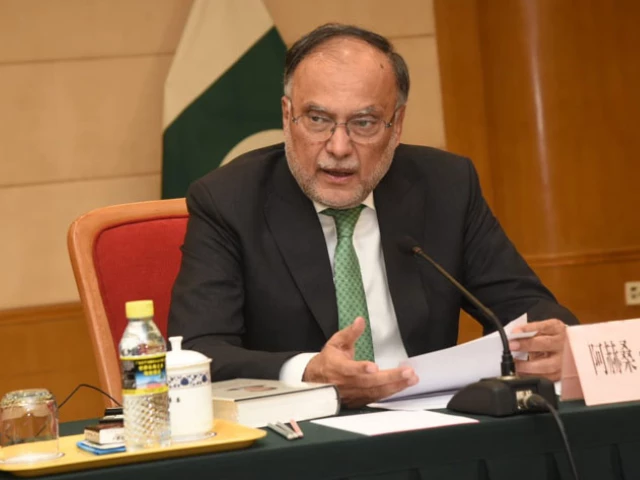Business
Spirit Airlines is on shakier ground after avoiding hard decisions in bankruptcy

A Spirit Airlines plane takes off from Oakland International Airport on May 06, 2024 in Oakland, California.
Brandon Bell | Getty Images
In March, Spirit Airlines came out of bankruptcy protection in less than four months and entered a worsening landscape. Consumers were holding off booking flights and U.S. planes were awash in empty seats. Even the most profitable airlines cut the rosy financial forecasts they had issued at the start of the year.
But Spirit, an airline with bright yellow planes that has become synonymous with budget travel in the U.S., now appears on even shakier ground. Last week, five months after getting out of bankruptcy, Spirit warned it might not be able to survive a year without more cash and that its credit card processor was seeking more collateral.
On Thursday, Spirit said it borrowed the entire $275 million available under its revolver. It also reached a two-year extension on its credit card processing agreement with U.S. Bank National Association to hold back up to $3 million a day.
Industry experts said the airline avoided making hard decisions before or during bankruptcy protection, such as renegotiating aircraft leases or shrinking the carrier altogether. Instead, the airline in bankruptcy reached a deal with bondholders, who exchanged debt for equity.
“It made it that much more unlikely for them to succeed without having tackled some of those issues,” said Joe Rohlena, airline analyst at Fitch Ratings, which downgraded Spirit last Friday, saying the company might be unable to avoid a default because of its cash burn.
Bankruptcy attorney Brett Miller, U.S. co-chair of the restructuring department at Willkie Farr & Gallagher who represented the creditors’ committee, said Spirit “didn’t use the tools available to them in Chapter 11” for bigger changes.
Spirit had forecast a net profit of $252 million this year, according to a court filing from December. But its report last week said it instead lost nearly $257 million since March 13, after it exited Chapter 11 through the end of June.
Shares of Spirit Aviation Holdings have dropped close to 58% since its “going concern” warning earlier this month. The stock of other airlines rallied after the cautionary statement. About 10% of Spirit’s seats are on routes with no competition, according to Courtney Miller of Visual Approach Analytics, an aviation research firm.
Signs of strain are showing. Aircraft lessors have reached out to competitor airline executives in recent weeks asking if they would take any of Spirit’s roughly 200 Airbus aircraft, according to people familiar with the matter.
Aviation analytics firm IBA’s chief economist, Stuart Hatcher, said he would have expected Spirit to be more proactive on dealing with aircraft leases during bankruptcy.
“If they’re able to strip 10% of all of their lease rates, that would have had a huge impact on cash flow,” he said.
This doesn’t mean the end of the line for Spirit.
“There’s a lot of incentive to keep airlines alive because there’s a lot of constituencies that would be hurt badly” like employees, consumers and others, said James Sprayregen, vice chairman of financial services company Hilco Global who represented United Airlines and TWA airlines in their respective bankruptcies.
Selling assets
Even before bankruptcy, Spirit had embarked on a project to sell more upmarket products like roomier seats or bundled fares that include seat assignments and baggage, to better compete with larger rivals that have enjoyed a windfall from big-spending customers post-pandemic.
More recently, the carrier has said it is seeking to sell assets like planes, leases and real estate to raise cash. It has also reduced some of its unprofitable flying and last year had announced job cuts and aircraft sales last year to cut costs and raise cash.
Spirit CEO Dave Davis told employees in a memo last week that the changes the Dania Beach, Florida-based company is making “will continue to provide consumers the unmatched value that they have come to expect for many years to come.”
Spirit declined to comment on whether it would file for bankruptcy again or whether lessors are trying to remarket its planes.
“We will not comment on market rumors and speculation,” Spirit said in an emailed statement. “Spirit Airlines is a critical part of the U.S. aviation industry, and we provide high-value travel options to the communities we serve. We have saved consumers hundreds of millions of dollars, whether they fly with us or not. Our focus is on making the necessary changes to better position the company and build a stronger airline. We remain hard at work on many initiatives to protect our business, valued Team Members, partners and Guests.”
Travelers wheel luggage toward Spirit Airlines check-in desk at George Bush Intercontinental Airport, Tuesday, Nov. 21, 2023, in Houston.
Jason Fochtman | Houston Chronicle | Hearst Newspapers | Getty Images
IBA’s Hatcher said it’s getting to be the wrong time of year — the low season, after the peak summer and before the winter holidays — to place aircraft with other airlines, though pricing has been firm. It’s been even stronger for spare Pratt & Whitney engines. The engines for Airbus A321neos that Spirit uses are renting for $15.8 million a month, up about 50% from 2019, according to IBA data.
But some warn that even deep cuts can’t always turn an airline around.
“You have no place to sleep if you burn your bed,” said Brett Snyder, founder of the Cranky Flier travel website, author of a weekly airline industry network analysis and a former airline manager.
Meanwhile, the carrier already plans to furlough hundreds of more pilots, and both aviators’ and flight attendant unions are bracing employees for worse news ahead.
“Spirit is in a fragile financial position, likely more so than at any point in the previous 24 months,” the Association of Flight Attendants-CWA, which represents Spirit’s roughly 5,400 cabin crew members, said in a note to the members on Aug. 12, after Spirit’s warning. “Use this time to assess your financial situation and begin strategizing how best to weather the financial impact that flying cutbacks may have on your household.”
Hundreds of its flight attendants have already taken temporary leaves of absence, which allowed them to keep medical benefits.
Rough few years
Spirit has faced other challenges leading up to its bankruptcy filing last year.
A Pratt & Whitney engine recall grounded many of its aircraft starting in 2023. That same year it reached a deal to merge with fellow budget carrier Frontier Airlines, but shareholders rejected the deal in favor of an all-cash takeover by JetBlue Airways that was ultimately shot down in a federal antitrust case, leaving both carriers on their own.
Frontier was in merger discussions with Spirit last year just before Spirit’s bankruptcy filing, but those talks fell apart.
“They’ve squandered every opportunity to make everything work,” Snyder said.
An oversupply of domestic flights also drove down airfare in recent years, prompting the industry to cut back capacity, and the trend was especially punishing for U.S.-focused carriers. Those low-fare carriers had another problem when wages went up in the wake of the pandemic, upending their low-cost model.
“I think there may have been a bit of optimism on their part in terms of kind of the strategic reset that they had planned,” said Fitch’s Rohlena. “That then came face-to-face with a harder, harsher aviation environment.”
Business
Key Financial Deadlines That Have Been Extended For December 2025; Know The Last Date

New Delhi: Several crucial deadlines have been extended in December 2025, including ITR for tax audit cases, ITR filing and PAN and Aadhaar linking. These deadlines will be crucial in ensuring that your financial affairs operate smoothly in the months ahead.
Here is a quick rundown of the important deadlines for December to help you stay compliant and avoid last-minute hassles.
ITR deadline for tax audit cases
The Central Board of Direct Taxes has extended the due date of furnishing of return of income under sub-Section (1) of Section 139 of the Act for the Assessment Year 2025-26 which is October 31, 2025 in the case of assessees referred in clause (a) of Explanation 2 to sub-Section (1) of Section 139 of the Act, to December 10, 2025.
Belated ITR filing deadline
A belated ITR filing happens when an ITR is submitted after the original due date which is permitted by Section 139(4) of the Income Tax Act. Filing a belated return helps you meet your tax obligations, but it involves penalties. You can only file a belated return for FY 2024–25 until December 31, 2025. However, there will be a late fee and interest charged.
PAN and Aadhaar linking deadline
The Income Tax Department has extended the deadline to link their PAN with Aadhaar card to December 31, 2025 for anyone who acquired their PAN using an Aadhaar enrolment ID before October 1, 2024. If you miss this deadline your PAN will become inoperative which will have an impact on your banking transactions, income tax return filing and other financial investments.
Business
Stock Market Live Updates: Sensex, Nifty Hit Record Highs; Bank Nifty Climbs 60,000 For The First Time

Stock Market News Live Updates: Indian equity benchmarks opened with a strong gap-up on Monday, December 1, touching fresh record highs, buoyed by a sharp acceleration in Q2FY26 GDP growth to a six-quarter peak of 8.2%. Positive cues from Asian markets further lifted investor sentiment.
The BSE Sensex was trading at 85,994, up 288 points or 0.34%, after touching an all-time high of 86,159 in early deals. The Nifty 50 stood at 26,290, higher by 87 points or 0.33%, after scaling a record intraday high of 26,325.8.
Broader markets also saw gains, with the Midcap index rising 0.27% and the Smallcap index advancing 0.52%.
On the sectoral front, the Nifty Bank hit a historic milestone by crossing the 60,000 mark for the first time, gaining 0.4% to touch a fresh peak of 60,114.05.
Meanwhile, the Metal and PSU Bank indices climbed 0.8% each in early trade.
Global cues
Asia-Pacific markets were mostly lower on Monday as traders assessed fresh Chinese manufacturing data and increasingly priced in the likelihood of a US Federal Reserve rate cut later this month.
According to the CME FedWatch Tool, markets are now assigning an 87.4 per cent probability to a rate cut at the Fed’s December 10 meeting.
China’s factory activity unexpectedly slipped back into contraction in November, with the RatingDog China General Manufacturing PMI by S&P Global easing to 49.9, below expectations of 50.5, as weak domestic demand persisted.
Japan’s Nikkei 225 slipped 1.6 per cent, while the broader Topix declined 0.86 per cent. In South Korea, the Kospi dropped 0.30 per cent and Australia’s S&P/ASX 200 was down 0.31 per cent.
US stock futures were steady in early Asian trade after a positive week on Wall Street. On Friday, in a shortened post-Thanksgiving session, the Nasdaq Composite climbed 0.65 per cent to 23,365.69, its fifth consecutive day of gains.
The S&P 500 rose 0.54 per cent to 6,849.09, while the Dow Jones Industrial Average added 289.30 points, or 0.61 per cent, to close at 47,716.42.
Business
South Korea: Online retail giant Coupang hit by massive data leak

Osmond ChiaBusiness reporter
 Getty Images
Getty ImagesSouth Korea’s largest online retailer, Coupang, has apologised for a massive data breach potentially involving nearly 34 million local customer accounts.
The country’s internet authority said that it is investigating the breach and that details from the millions of accounts have likely been exposed.
Coupang is often described as South Korea’s equivalent of Amazon.com. The breach marks the latest in a series of data leaks at major firms in the country, including its telecommunications giant, SK Telecom.
Coupang told the BBC it became aware of the unauthorised access of personal data of about 4,500 customer accounts on 18 November and immediately reported it to the authorities.
But later checks found that some 33.7 million customer accounts – all in South Korea – were likely exposed, said Coupang, adding that the breach is believed to have begun as early as June through a server based overseas.
The exposed data is limited to name, email address, phone number, shipping address and some order histories, Coupang said.
No credit card information or login credentials were leaked. Those details remain securely protected and no action is required from Coupang users at this point, the firm added.
The number of accounts affected by the incident represents more than half of South Korea’s roughly-52 million population.
Coupang, which is founded in South Korea and headquartered in the US, said recently that it had nearly 25 million active users.
Coupang apologised to its customers and warned them to stay alert to scams impersonating the company.
The firm did not give details on who is behind the breach.
South Korean media outlets reported on Sunday that a former Coupang employee from China was suspected of being behind the breach.
The authorities are assessing the scale of the breach as well as whether Coupang had broken any data protection safety rules, South Korea’s Ministry of Science and ICT said in a statement.
“As the breach involves the contact details and addresses of a large number of citizens, the Commission plans to conduct a swift investigation and impose strict sanctions if it finds a violation of the duty to implement safety measures under the Protection Act.”
The incident marks the latest in a series of breaches affecting major South Korean companies this year, despite the country’s reputation for stringent data privacy rules.
SK Telecom, South Korea’s largest mobile operator, was fined nearly $100m (£76m) over a data breach involving more than 20 million subscribers.
In September, Lotte Cards also said the data of nearly three million customers was leaked after a cyber-attack on the credit card firm.
-

 Sports1 week ago
Sports1 week agoWATCH: Ronaldo scores spectacular bicycle kick
-

 Entertainment1 week ago
Entertainment1 week agoWelcome to Derry’ episode 5 delivers shocking twist
-

 Politics1 week ago
Politics1 week agoWashington and Kyiv Stress Any Peace Deal Must Fully Respect Ukraine’s Sovereignty
-

 Business1 week ago
Business1 week agoKey economic data and trends that will shape Rachel Reeves’ Budget
-

 Tech6 days ago
Tech6 days agoWake Up—the Best Black Friday Mattress Sales Are Here
-

 Fashion7 days ago
Fashion7 days agoCanada’s Lululemon unveils team Canada kit for Milano Cortina 2026
-

 Tech6 days ago
Tech6 days agoThe Alienware Aurora Gaming Desktop Punches Above Its Weight
-

 Politics1 week ago
Politics1 week ago53,000 Sikhs vote in Ottawa Khalistan Referendum amid Carney-Modi trade talks scrutiny


1729471601-0/image-(8)1729471601-0-640x480.webp)








